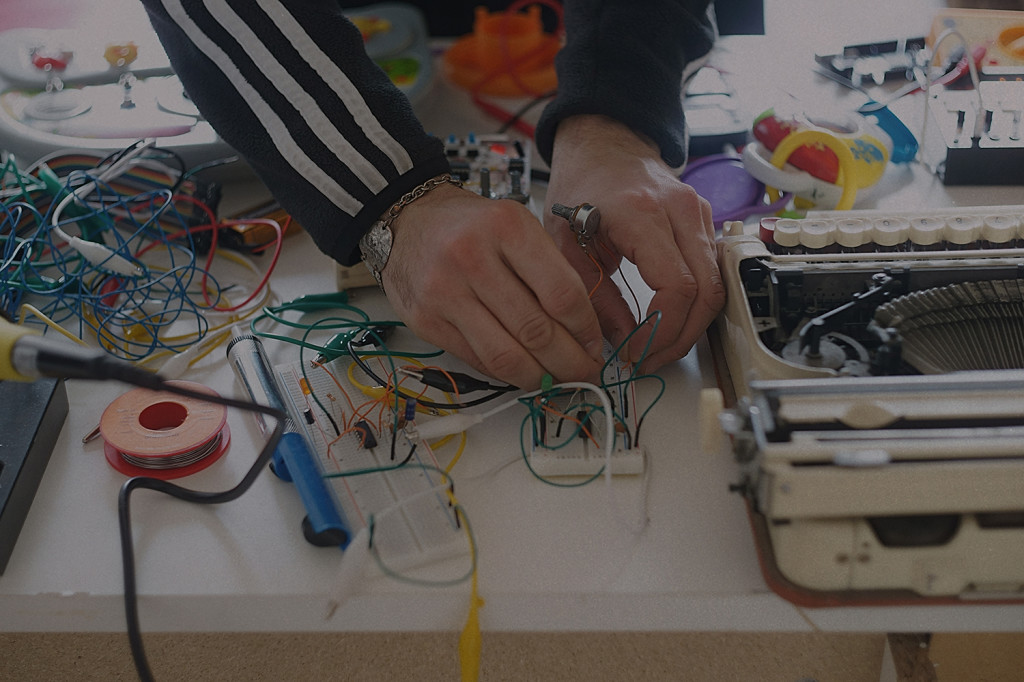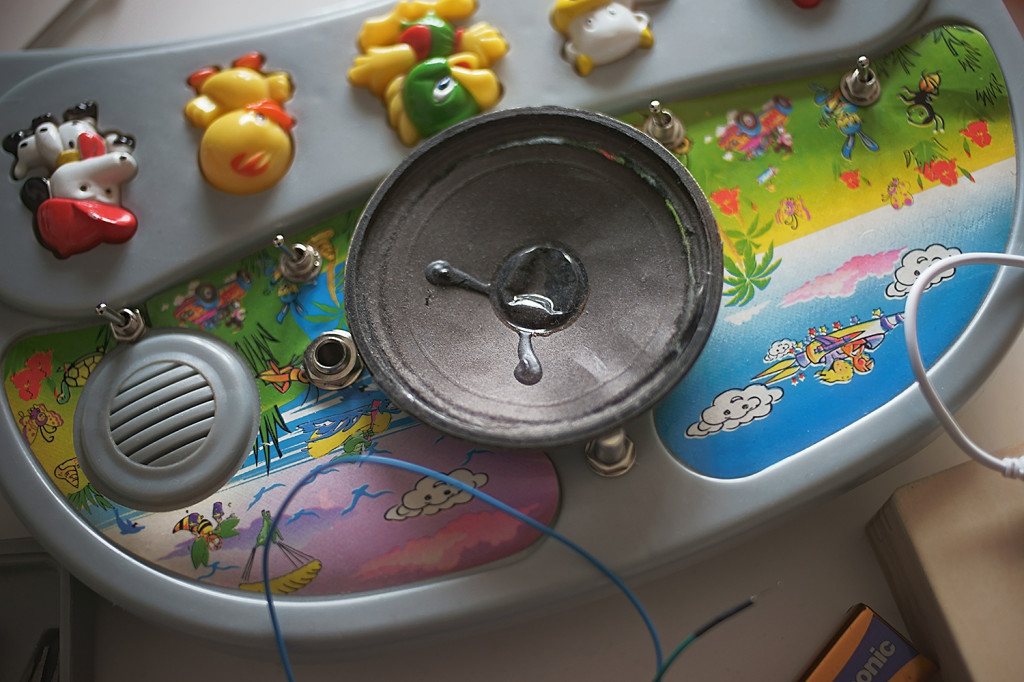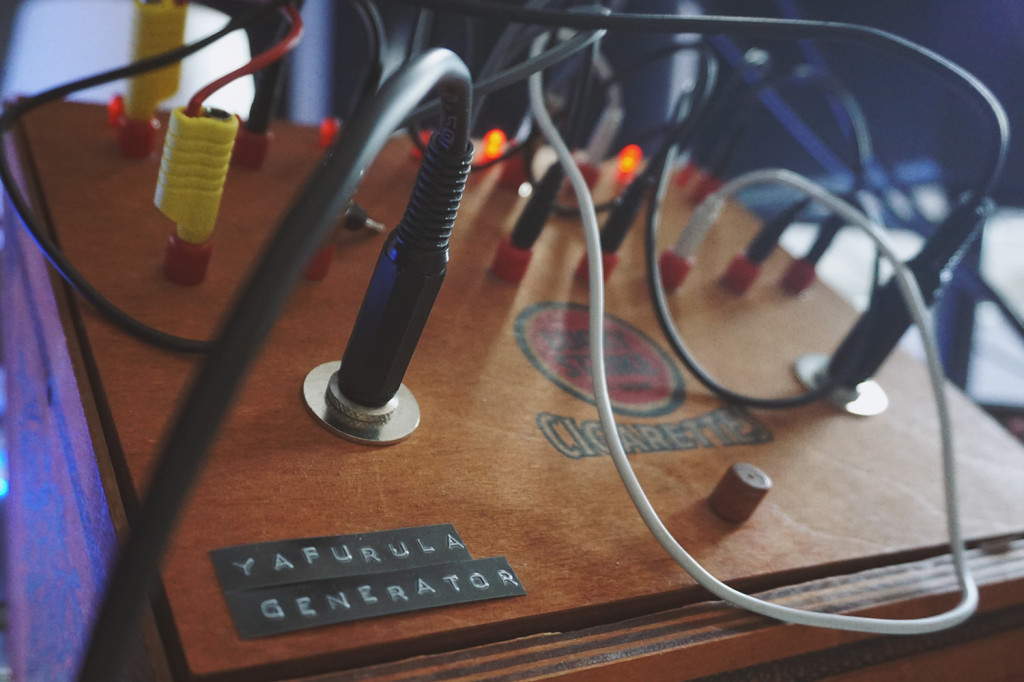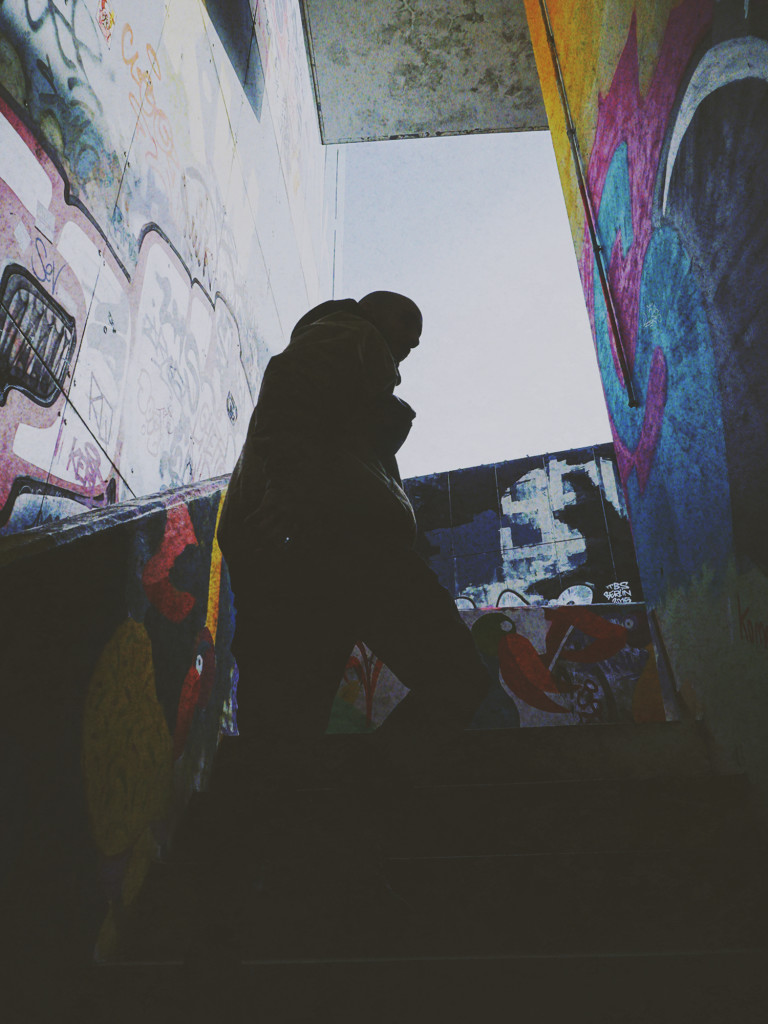Balfa sucks us into dystopian reveries, as we premiere a new video – and see some of the home-built instruments making such wonderfully acerbic sounds.
First, let’s set the mood with the video, which pairs music artist Balfa with artist/animator Maria Mendes of Portugal. Whatever is rendering in that skin, that’s more or less how my body feels if I give it over to these sounds.
It’s for the track, from this month’s debut LP Perfecta Analogía De La Decadencia. (I bet you got the translation of that one. Full track-by-track album description with extended commentary is on his site.)
Balfa is a Spanish artist who has crafted his debut LP, he says, as an autobiographical journey through Berlin over his four year stay here. (It’s true – those screams of agony you hear, that’s exactly the sound my soul makes when I’m stuck just before closing on a Saturday night in the produce section of the Wrangelstrasse Lidl. But I digress.)
What you get is the raw, exposed crackle and growl of electronics, giving way to abstract broken beats and fragmented landscapes. And then, unexpectedly, he’ll break into a furious, hyperactive groove, in between caves of ambient sound. Those occasional repetitions now qualify things to be called “techno,” but frankly – I’m totally okay with the ongoing dissolution of the term, if it means more experimentation.
The album has the unedited directness of late-night studio psychosis, but it’s always engaging and inventive. The full stream is on HATE; there’s a vinyl LP that then spills over on digital with a
And the sounds are unpredictable and show this love for electricity in part because of Balfa’s extensive DIY work. Balfa has been building his own instruments, with a decidedly punk approach (as we like around these here parts at CDM).
Most interesting is this “Yafurula Generator, Revelwaver & Clock”:
There are three separate modules here. The main is the Yafurula Generator:
Yafurula Generator is the main piece. A sequencer that contains the power supply for the whole synthesizer. It’s built inside an old German cigarettes box I bought in the studio of a sound artist who makes synthesizers professionally and needed to get rid of a lot of stuff. Its sloping shape
make it ideal for working with patch cables.With 16 connections and 8 cables to patch them in many ways, it creates sequences of different length. It’s not an 8-step sequencer: the pattern length depends on the number of cables connected to each other.
The CLOCK is just that – with a single knob. And there’s a wave generator.
Actually burning out the oscillators is part of the appeal. He explains:
Best part of this one is thesound produced when it gets a pattern from the sequencer. There’s aspecial knob position that controls the first oscillator’s frequencyand produces glitches when the resistor is hitting up too much. Thenoise produced is fuckinggreat, but doesn’t last long. Each timethis happens , the resistor starts to get hot faster and the noise isevery time shorter andshorter, until the resistor gets burned and damagedand it needs to be exchanged for a new one.
If you ever share a studio with Balfa, and wonder why your resistors suddenly start disappearing… well…
There’s also this synth built into the shell of a PlayStation controller:
More on that: https://www.blf-lab.com/en/discover-the-album/playstation-synthesizer/
His live performance – as recently at Eufonic festival – is all about handmade devices and improvisation. On the album, it’s nice hearing those untethered textures mixed with song structures and sounds – a compelling split.
I also quite like this little reveal they did for the cover artwork by Delilirium Candidum:
If this goes anywhere, you can say again you heard it here first – this is BLF001. Now that he’s back in Spain, Balfa promises “BLF Lab” will be an outlet for more of this sort of endeavor:
Balfa establishes his BLF Lab project not only as a space for creative experimentation through craft
We’ll be looking forward to what transpires, Balfa.
More pictures of his DIY work:



